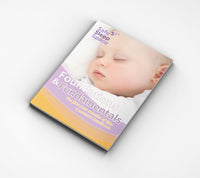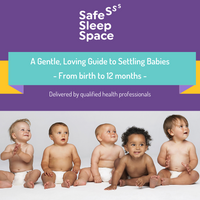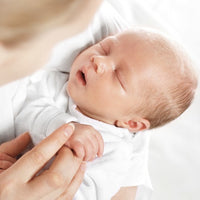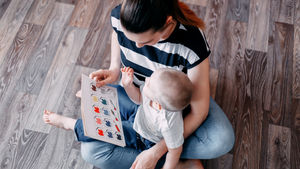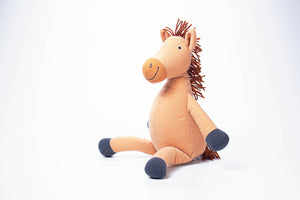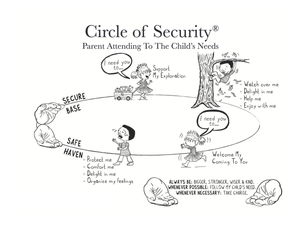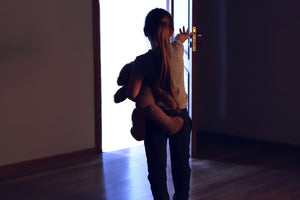Multiples and Sleep: Tips and Tricks to Help

At the risk of stating the painfully obvious, caring for multiples is a lot more work than for single babies. Take all the caregiving issues and multiply by 2, 3 or however many babies there are. Not to mention there may already be a couple of older children already in the family. It makes sense then to learn all you can about ways to encourage the littlest ones to sleep well.
Which One Needs Me Now?
Ideally, multiples are cared for in the same way throughout the day and night. We all know that every baby is unique and deserves special, individual care. But the reality of having multiple babies in the household is that everyone needs to take their turn. There is limit to the amount of time and energy you have to invest into each little person.
Some days you’ll find everyone gets their fair share and others will seem as if one baby got the best of you.
Look at the time you spend with each baby over the course of a few days. Like food intake, it’s the average of what goes in over time that’s important, not just the 12 hours beforehand.
Parents of multiples say that the key to success is synchronizing their babies’ care - doing the same thing for each baby at around the same time. Even if you’ve never considered yourself to be an organised person, be prepared for a steep learning curve.
One Cot or More?
According to current SUDI (Sudden Infant Death in Infancy) research, the safest place for all babies to sleep is in their own cot. And although it can seem like a nice idea to use one cot for two babies, this is a risky practice.
In situations where there is no option, or there is only one cot for twins, place the babies’ head to head, at opposite ends of the cot.
When it comes to sleep and settling, the same approaches for settling one baby don’t always apply to multiples e.g. one baby may prefer patting to shushing. Though the concepts are the same, the logistics are more complicated.
You Have Choices
- Most parents of multiples prefer them to share a room. Of course this depends on house/room size etc but it makes sense for them to be together. Keeping your multiples in the same room will make them easier to manage and you’ll be able to see what each one is up to.
- Position their cots either facing each other, or away. Again, room configurations may dictate your options. If your babies soothe each other and fret when they can’t see the other, make sure they are in each other’s sight.
- Place the more unsettled baby closest to the door. If you need to plan your escape as they’re settling, there’s less chance of disturbing the sleeping one.
- Have one cot for each baby. This will make life easier for you and will help them develop a predictable sleeping routine.
- Use a monitor to observe their behaviour. Place this to optimise your view of both cots and well clear of little hands.
- Consider what suits you - patting, shshing, cot rocking or cuddling your babies to sleep. Bear in mind that nursing and feeding even one baby to sleep soon becomes unsustainable. Eventually, parents become exhausted and want their baby to go to sleep on their own. With multiples, you may need to persuade them to self soothe right from the start.
- You could position the babies’ cots alongside each other. This way you’ll be able to stand between them and pat each baby at the same time. Alternately, you could place the cots apart and go to each baby in turn.
- Ask family and friends not to always cuddle the babies to sleep. Lovely as this is, it will make life more difficult for you when you’re caring for them on your own.
- Use bassinettes until they’re big enough for cots or place them in cots from birth. Remember, the safest place for babies to sleep is in their own safe cot, in their parent’s room for the first 6-12 months of life.
- If you’re keen to feed one baby at a time, then consider feeding the other one straight after finishing the first. Similarly, with sleep - you may prefer to settle one baby and then the other. Importantly, try not to exceed 30 minutes (average) between each baby’s feed/settling. Otherwise, you’ll feel you’re never having a break.
Ten Sleep and Settling Tips for Multiples
- Aim to settle your babies at the same time, using the same methods. Consistency can be very helpful.
- Settle the easiest, less resistant one first and then attend to the baby who needs more attention.
- Right from the start, encourage your babies to settle without too much help from you. Think about how you’d like them to go to sleep long-term and use this as a goal.
- Be prepared for differences when it comes to pacifiers. Some babies love them and others aren’t keen. If the pacifier becomes a problem and you’re constantly reinserting it in your baby’s mouth, stop using it. A couple of day’s withdrawal is generally all it takes to be forgotten.
- Share with your partner who settles which baby. Support your babies’ flexibility in accepting different caregivers.
- Always follow the safe sleeping guidelines no matter how many babies you have.
- Try not to go to your babies the minute they wake. Encourage them to feel comfortable in their own company. There’s value in waiting and listening when they first wake up. They’ll let you know when you’re needed.
- Be prepared for settling sessions to not always work. There will be times when one baby goes to sleep and the other doesn’t. See these times as an opportunity for some one-on-one time with the wakeful one.
- Avoid feeling anxious about one baby disturbing the other. Some babies seem to find the noise of their sibling soothing. It’s unrealistic to insulate against whinging and crying. They tend to take turns anyway.
- Support your babies to follow your verbal cues. “Lie down”, “it’s sleep time”, “go to sleep” will all be helpful if you’re at one cot side and the other baby/ies are crying.
What We Know to be True with Multiples
- Every baby is unique. Even identical twins can show subtle differences in their temperament and personality. Some fit into a synchronized routine and others just want to make their own little statements.
- Organisation is the key to success. Experiment with different ways of doing things until you find what works and will save you time.
- Technology can be your best friend – use spreadsheets, apps, texts and calendar prompts to keep track of what you’re doing. One place for reminders, e.g. your phone, will simplify things.
- Use every labour saving device in the household that you can afford. A big capacity washing machine, dryer, dishwasher, even a slow cooker will all save you hours of extra work over the years.
- Set up baby/toddler zones in the house and quarantine areas which are child free. Maintaining order in at least a couple of places will help you feel some sense of order.
- Each day will be different. Remind yourself of what’s important. As long as your babies are fed, clean, loved and cared for and you are all well and healthy, everything else is a bonus.
- Care well for your babies’ parents. If you’re not OK then the whole family will feel it.
Help with looking after your babies
The NourishBaby - Guide to Babies - is an online program that you can view in your own time. The Guide to Babies helps you to understand and care for your baby and covers key milestones, sleep and settling advice and baby development. There is a section on real parents sharing their experience of adjusting to parenthood.
Many parents have reduced sleep when a new baby arrives. The Safe Sleep Space website has a variety of resources and supports to provide tips and advice on how to assist your baby with sleep. You can also book a phone consultation to speak with a Sleep Consultant.
Other blog posts you will find helpful:
When is it time to get help for my child's sleeping?
Why is infant mental health so important when it comes to sleep?
Amber beads. Why they're really not a good idea.
More help?
Safe Sleep Space can provide sleep consultations for those with multiple babies, call us on 1300 775 337 to arrange a consultation.
Written for Safe Sleep by Jane Barry, midwife and child health nurse.
About Safe Sleep Space
Safe Sleep Space is Australia's leading infant and toddler sleep consultancy. Known for our gentle and response-based approach, our team of child health nurses, midwives, and early childhood educators have been supporting children and families since 2008. As a result, parents and professionals alike turn to Safe Sleep Space for knowledge relating to infant and toddler sleep.
